Tillandsia Zebrina
Click thumbnails for full size, scaled to a new window.
Tillandsia Zebrina
Originally T. ionantha var. zebrina
In 1994 this was included into the definition of T. ionantha - from a Botanists view it fits within the range of ionantha.
Shortly after, it was included in the Cultivar Registry as T. 'Zebrina' by Derek Butcher
as there were sufficient horticultural differences to warrant "keeping the name alive".
Listed as a cv. of ionantha.
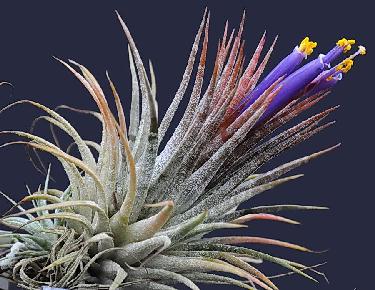
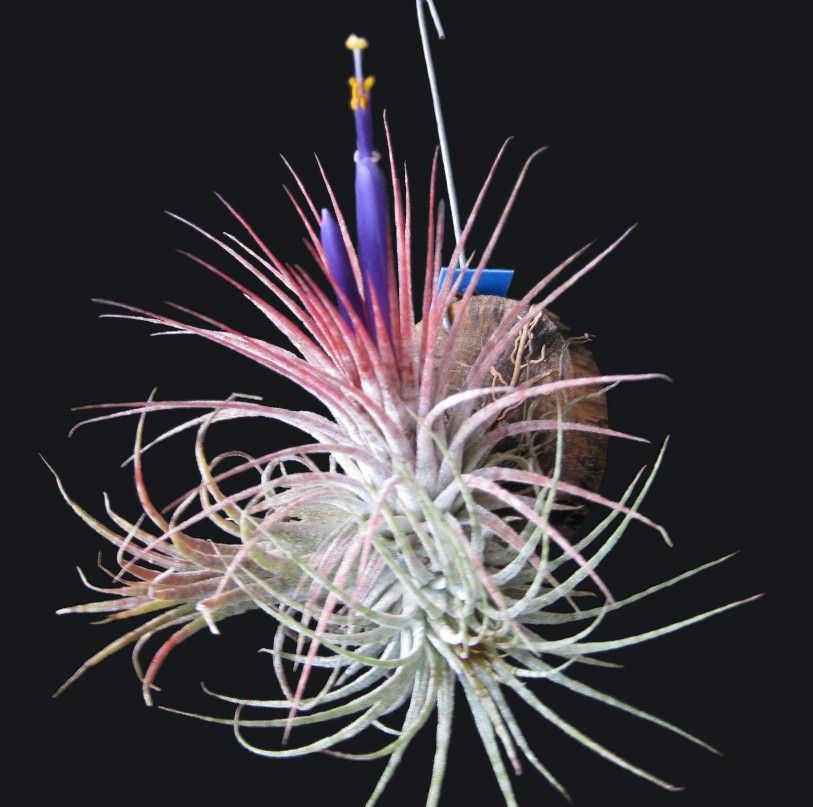
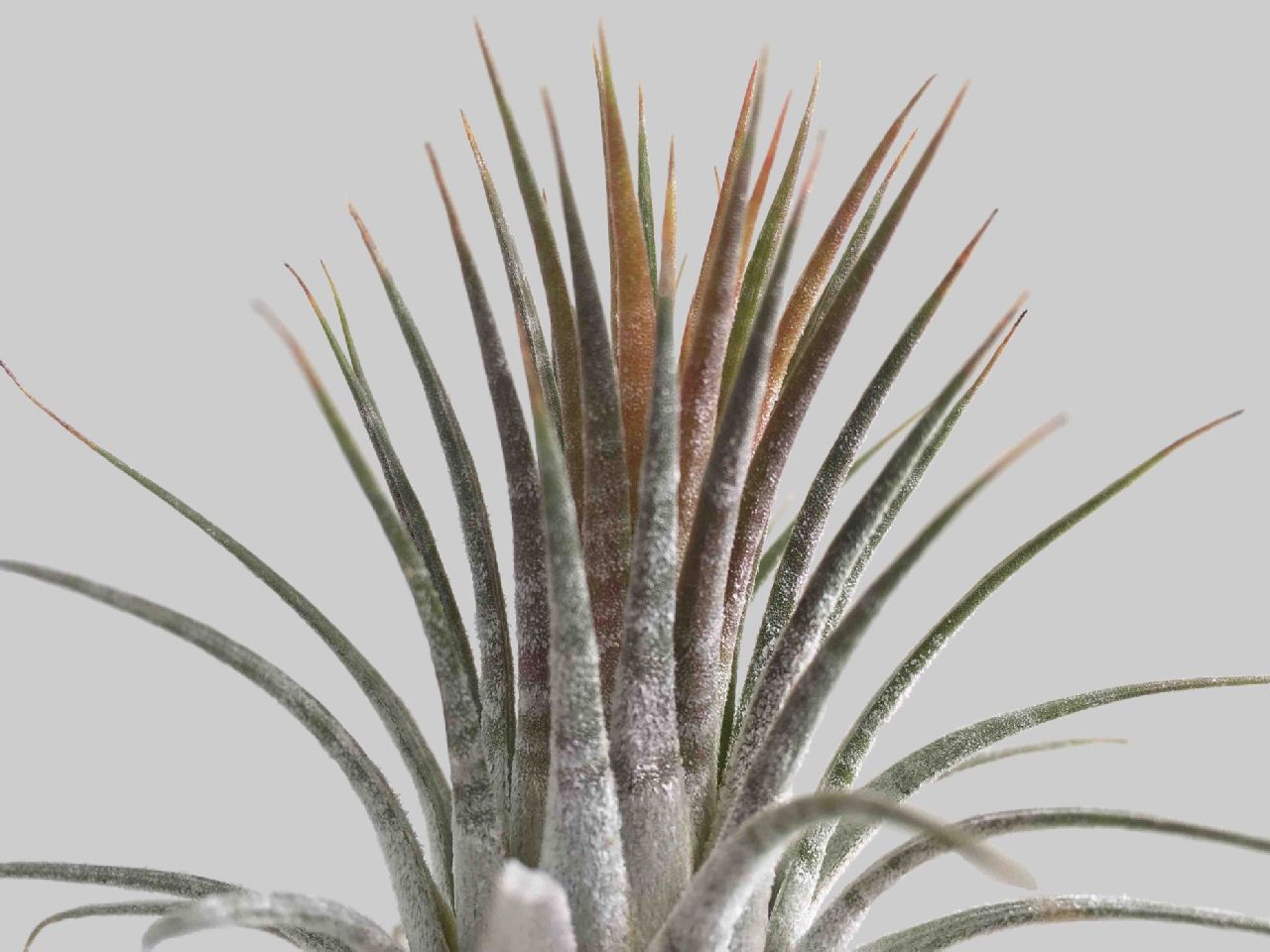
| Peter Tristram 08/11 |
Bob Hudson 12/12 |
Glenn William Jodner 05/16 |

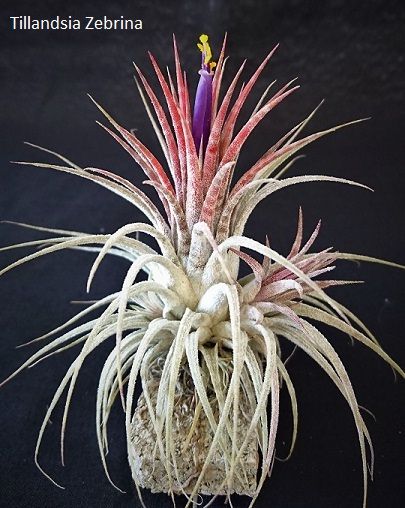

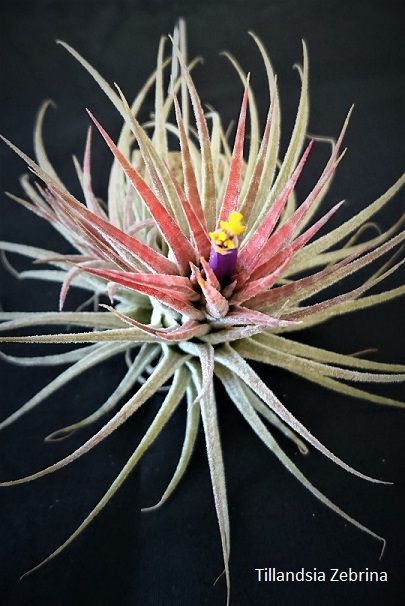
Steve Molnar ..."This one is a real favourite, first flower is out today and there is another one following it up so far. Hopefully there is another one or two flowers after that. Have put its own pollen on it so trying to get it to seed and maintain this fantastic looking plant. For those that do not know it that well it use to be T. ionantha var. zebrina. It was listed as a cv. of ionantha, but now continues under it's Cultivar name of T. Zebrina."
Peter Tristram ..."The story of T. ‘Zebrina’ is one of luck. I know some of the Germans went looking for it and confirmed that the area where Forster found was devastated in the big quake and the road and hillside are rubble in the valley now. I can’t remember if the Germans collected it, too, before the quake but I gather there were a few clones collected by Forster and the specimens I have from various sources do vary. What it does from seed I have no idea."
Tillandsia ‘Zebrina’
By Derek Butcher July 2013.
Tillandsia ionantha Planch. var. zebrine Bert Foster, J Brom Soc. 32(4): 164, 172. 1982
Treated as T. ionantha v. ionantha in DeRebus I 1994 but continues under the Cultivar name of T. ‘Zebrina’.
A var. ionantha foliorum laminis pulchre zonatis differt.
This variety differs from the species in its beautifully banded leaf blades. Collected in Guatemala and cultivated by Bert Foster, 1975, Type US.
In 1975, we spent our Christmas vacation in Guatemala and had an interesting time, but I do not recommend visiting there in that season because Latin American countries seem to close down for at least 2 weeks at Christmas time. On one of our side trips, we drove to Rio Dulce. Approximately 75 miles beyond the outskirts of Guatemala City, we made a comfort stop along the road. While meditating behind a large cactus, I happened to look up and was pleased to see what Dr. Lyman Smith now calls Tillandsia ionantha var. zebrine. Despite the fact that we never intend to make any of our South or Central American visits bromeliad collecting trips, we always acquire a few plants. In this case too, collecting a few of these plants seemed the natural thing to do.
A short time after we left Guatemala, the great earthquake occurred, and these specimens of T. ionantha had been collected along the fault line involved with the earthquake. As far as I know, that area was totally destroyed.
In the ensuing 5 years, I have managed to increase the original 5 plants to 50 plants of varying sizes, however, I do not have any plants for sale at this time.
In 2012 Dennis Cathcart of Tropiflora advised that he has a clone of ionantha with zebra stripes but it is not the same clone as 'Zebrina'. The old 'Zebrina' is a fairly typical Guatemalan clone; very fuzzy and gray. Our plant is a Mexican clone that is much less scurfy. We call it Zebrina Mex.
So you may come across this plant. No doubt there are other ‘ionantha’s’ that have this ‘zebra’ trait that cannot be considered the original clone!


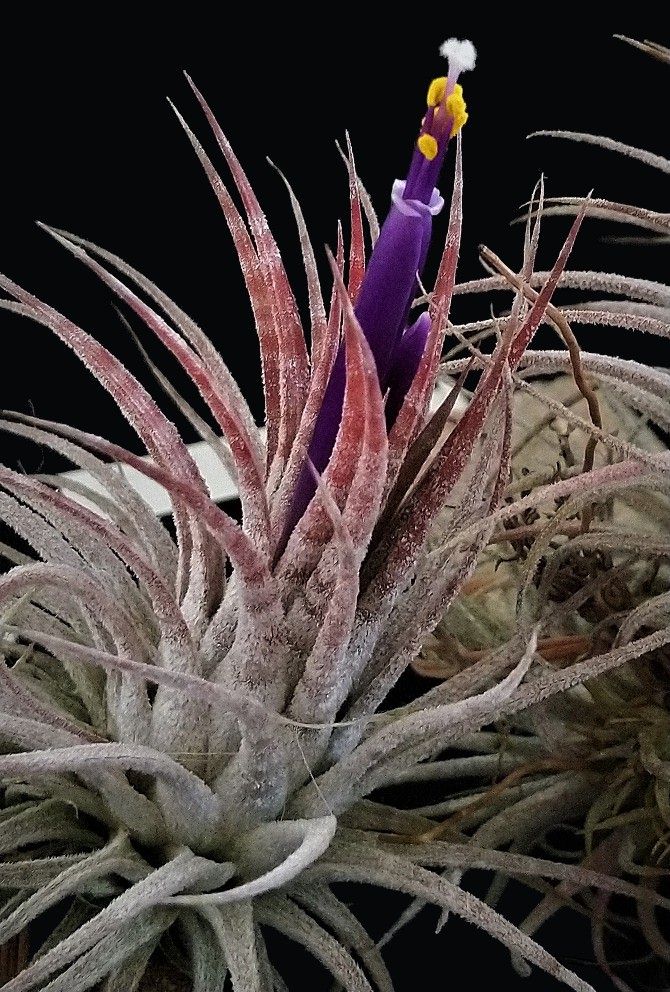
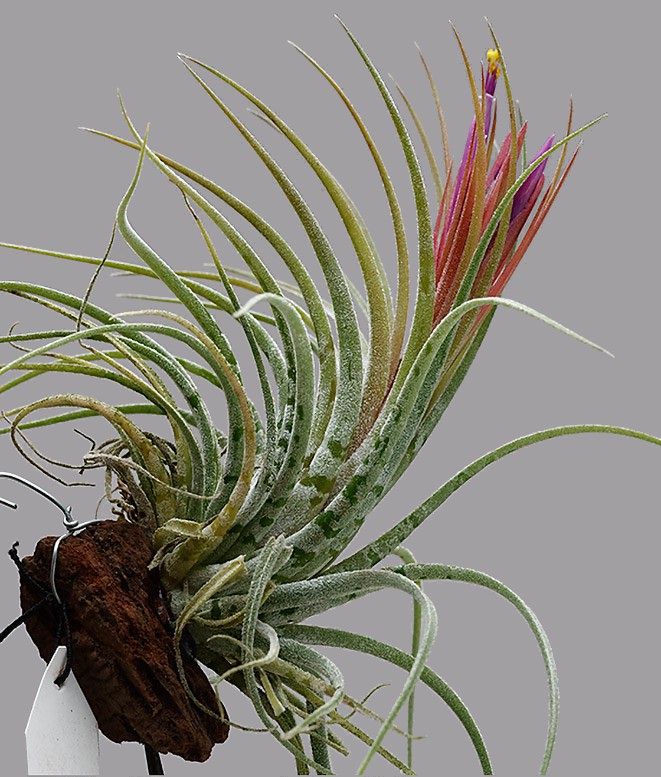
| Steve Molnar 06/19 'Zebrina' |
Andrew Flower 2010 scaposa 'Zebra Stripes' |
Andrew Flower ... "Thanks Steve - nice photos of a nice plant! It has similar "variegations" to a couple that popped up here in a Tillandsia scaposa population. I think your plant is superior though!
The BCR description of T. Zebrina says it has silver cross-banding, and I think this is a bit of a misnomer because if you look closely you see that the plants actually have heavily scaled leaves with irregularly occurring sections where the trichomes have failed to develop - consequently leaving a green patch of hairless skin (so to speak!). I think the same protein-misfiring is going on in the your 'Zebrina' and my 'Zebra Stripes' plants. It doesn't see to fit the pattern you might expect from a recessive gene, because banding doesn't occur when I cross different clones of Zebra Stripes.
Origins: I imported 100 "T. kolbii" from Pam Koide in 2000, and cross pollinated them to collect seed. From that I raised 436 seedlings: 2 had high-level banding, 1 had moderate banding and 2 had low banding. I crossed the 2 high-level banding plants and raised 150 seedlings, none of which had any banding. So much for sexual propagation! Subsequently, the two high-level banded Zebra Stripes have continued to have banded offsets.
Anyway, its about time I registerd 'Zebra Stripes" as I have a small population from the best seedling now.
Ed. ... "Andrew Flower's plant has now been registered as T. 'Anwyl Zebra Stripes'."

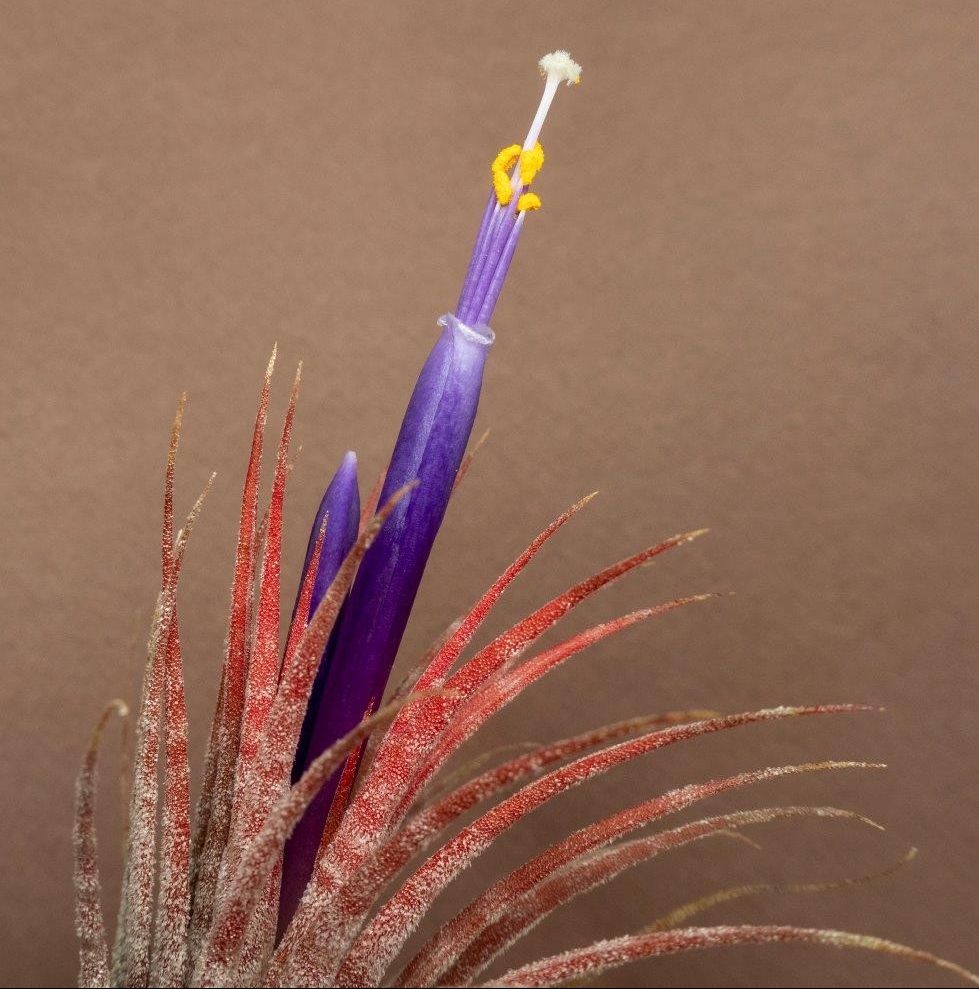
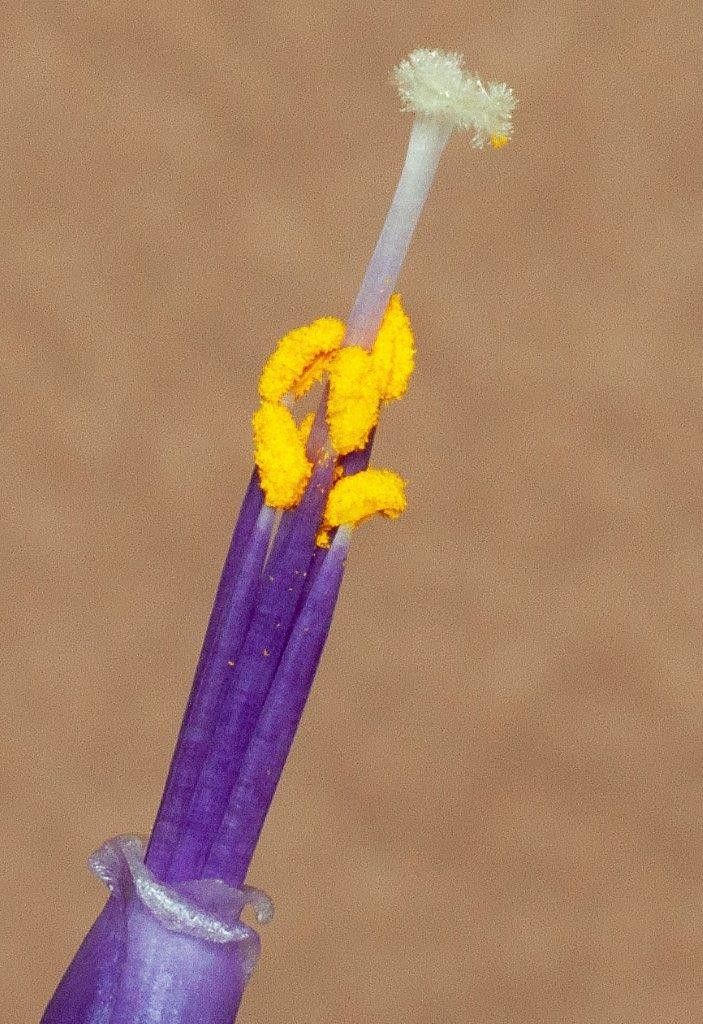
| Rob Bower 04/20 T. Zebrina |
Updated 18/07/20










